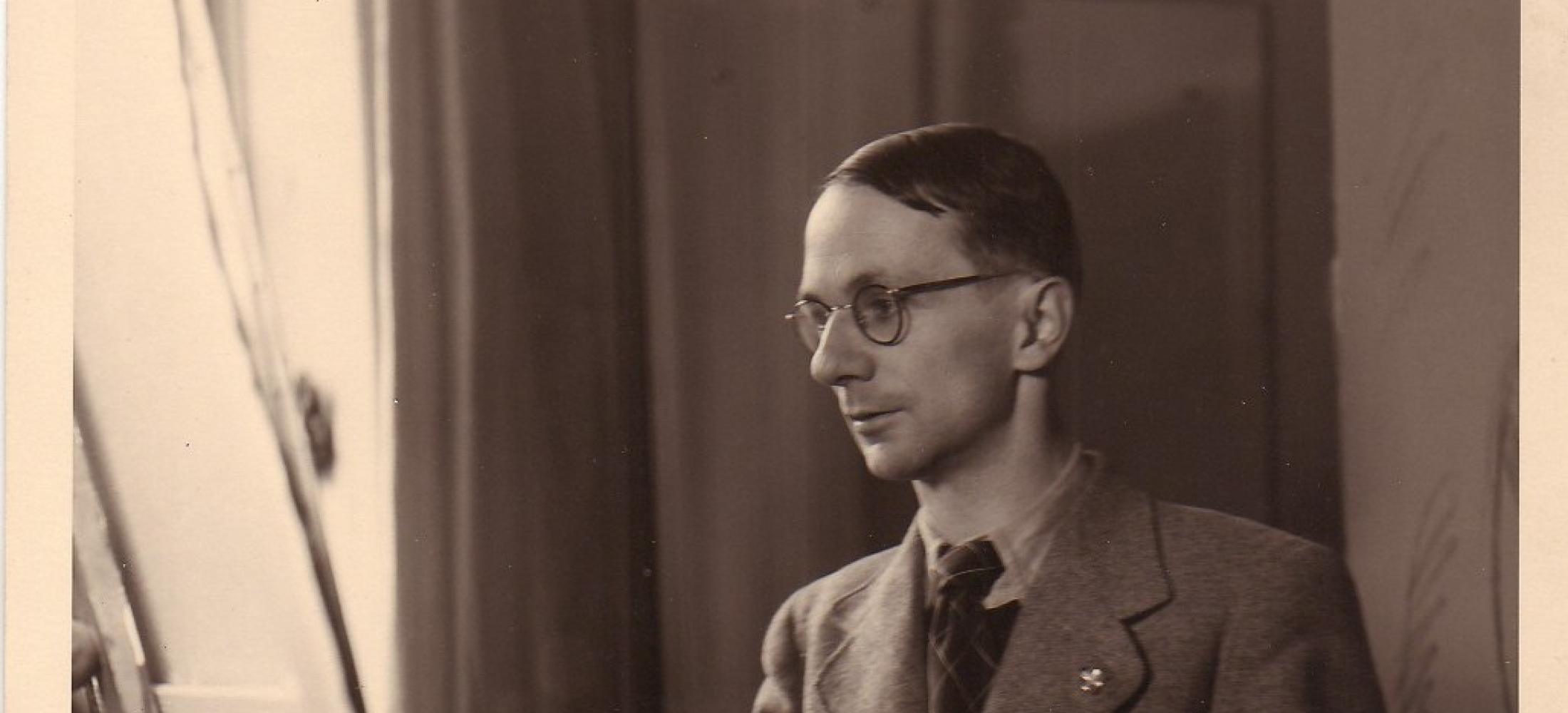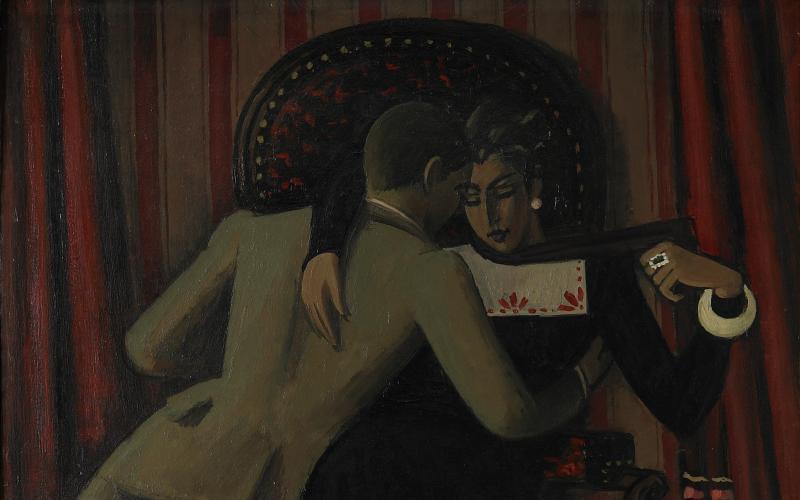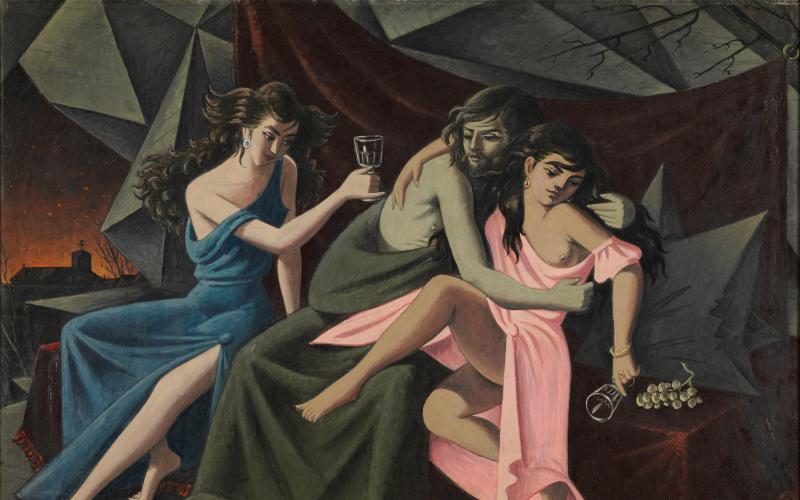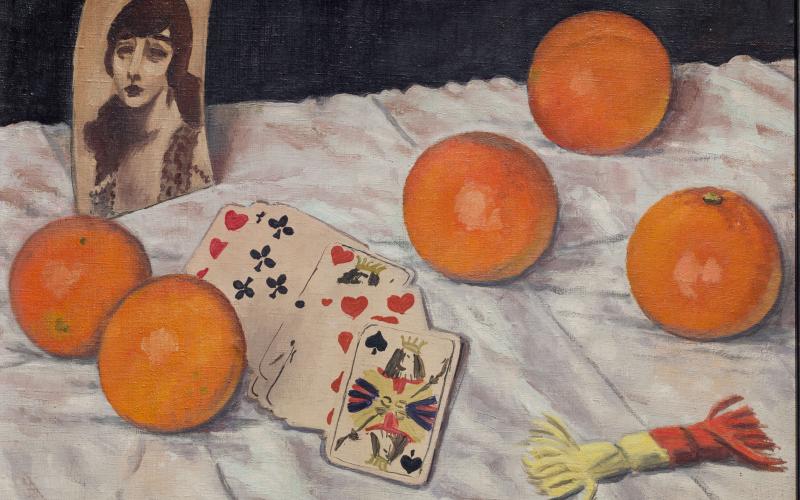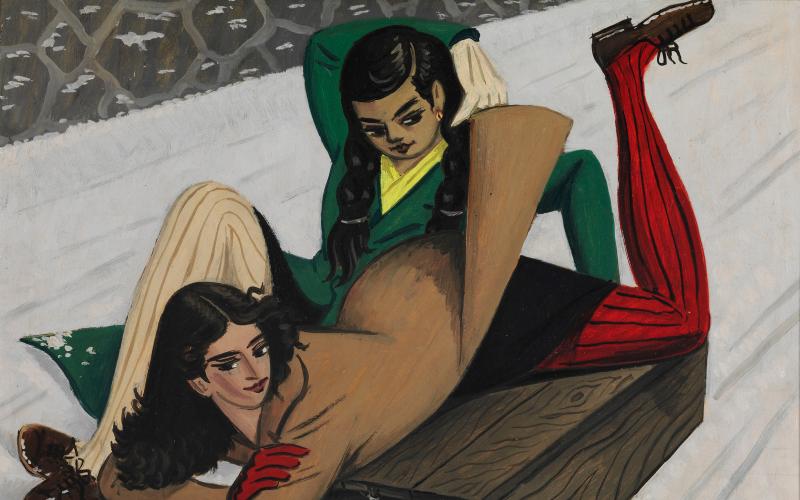Émile Chambon
The early years (1905-1928)
Émile François Chambon was born in Geneva on January 10, 1905, the son of Émile-Joseph Chambon and Joséphine born Coppier. Three years after Emile's birth, his mother gave birth to a daughter, Julia Mathilde Chambon, who would assist Emile throughout his life.
In the autumn of 1921, he entered the École des Beaux-Arts in Geneva, though not without difficulty, as the school's management considered that his family was not well off enough to allow him to embrace a career as an artist.
In 1921, he was awarded his first federal scholarship, which enabled him to travel to Paris with his father. This trip introduced him to the Cubist painters. Between 1925 and 1928, he worked with the painter Jean-Louis Gampert, a friend of Roger de La Fresnaye, assisting him in his studio and on the decorations for the church in Corsier (Geneva, Switzerland).
The achievement (1928-1950)
In 1928, he was awarded a second federal scholarship, which enabled the young Carouge native to make a second visit to Paris; he stayed for around ten weeks, exploring the Louvre Museum, where he made numerous copies. But his stay came to an end sooner than he had expected, having financial difficulties; he left behind his friends Chauvet and Van Berchem, with whom he had left, and returned to Geneva.
In February 1931, following on from "Raison d'être", the "Présence" movement was founded as a "group for action, art and philosophy"; Chambon contributed to the magazine published by the group, headed by Trolliet and Jean Descoullayes. Within the framework of the magazine, he became closer to Ferrare, who introduced him to the writer Max Jacob in Paris. Ferrare supported Chambon with conviction and was one of his first unconditional admirers.
The end of the 1930s saw a remarkable increase in Émile Chambon's painting output, almost doubling that of the beginning of the decade, a pace that would not slow down until the end of the 1960s.
The mature years (1950-1979)
From the early 1950s onwards, Chambon's work became increasingly popular in Switzerland, where he took part in a considerable number of group exhibitions, most of which were held in German-speaking part of Switzerland and were usually thematically focused. Chambon's name also began to appear on the walls of foreign galleries on an occasional basis, mainly in Paris, where he exhibited three times at the Salon de l'art libre at the Palais de Tokyo. The publication of a first monography on Chambon by Edouard Muller-Moor (Editions Cailler) in December 1957 further established his reputation as an artist.
In 1961, in Geneva, he met the writer Louise de Vilmorin, who immediately admired the artist's work and befriended him. On May 10, 1962, Louise de Vilmorin organized the opening of a major Chambon exhibition at the Galerie Motte in Paris. Louise de Vilmorin wrote a laudatory preface to the exhibition catalog. In 1966, his last major retrospective was held at the Musée Rath. His paintings - displayed alongside his collections - were once again unanimously acclaimed, and art critics praised the continuity of his style, described as refined and distinguished by the subtlety of her palette. In January 1969, Louise de Vilmorin returned to Geneva; the Chambons were once again received in her company at the Prince Aga Khan's home in Collonge. This was to be one of the last encounters with the writer, who died in December of the same year.
From 1977 onwards, Chambon's production of paintings diminished, and he devoted most of his time to drawing. He also experienced a number of health problems and was unable, much to his regret, to attend the opening of the major Gustave Courbet retrospective organized in July at the Musée d'Ornans to mark the hundredth anniversary of the painter's death. Two months later, however, he went with his sister, and on the way back took the opportunity to visit the royal saltworks at Arc-et-Senans.
Towards posterity (1979-1993)
In the last years of his life, Chambon's main concern was to perpetuate his work. In February 1980, he met with the director of the future Carouge museum, with a view to making a donation. Two years later, the painter donated eight large paintings to the museum. In the meantime, in October 1981, he donated an important part of his collection - almost eight hundred pieces of African and Oceanic art - to the Musée d'ethnographie in Geneva.
In November 1983, the municipality and Chambon himself set up arrangements for the transportation of the art objects; however, things took a while to fall into place. An arrangement was reached in March 1984, thanks to the intervention of art historian Jean-Marie Marquis.
Émile Chambon was also working on the publication of a book, under the watchful eye of the latter, in which he wished to illustrate some of the most representative works of his career. The book was published in 1984 by Skira. Parisian gallery owner Alain Blondel visits Chambon in his studio, and is keen to hold a new exhibition the following year, in May 1985. He painted very little, but devoted a great deal of time to the appraisals of Gustave Courbet's paintings, for which he was responsible.
Despite the Chambon exhibition varnished three years earlier at the Musée de Carouge, the artist remained bitter and once again threatened to take back his freedom with regard to his donation, as the inheritance agreement expired in autumn 1987. It took the mediation of Jean-Paul Santoni and Jean-Marie Marquis to appease the artist and ensure that he left the museum at least the works hung in the inaugural exhibition. The aborted creation of the "Musée Chambon" will forever remain the painter's great disappointment.
Émile Chambon died in Collonge-Bellerive on October 28, 1993.
The Fondation Émile Chambon was officially created on September 4, 1995, two years after the painter's death.
